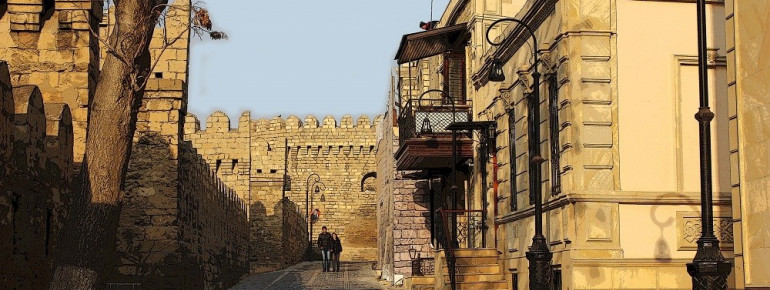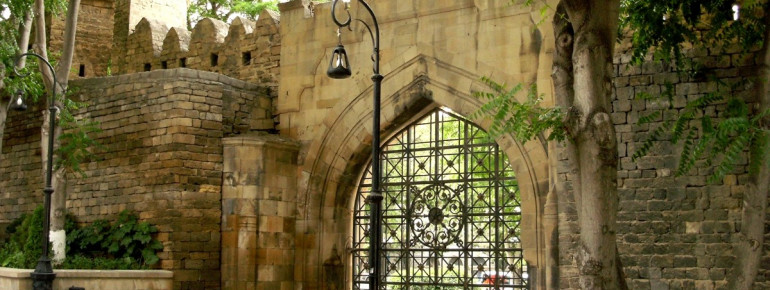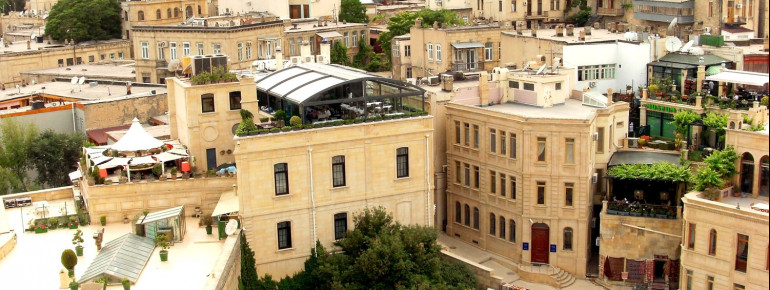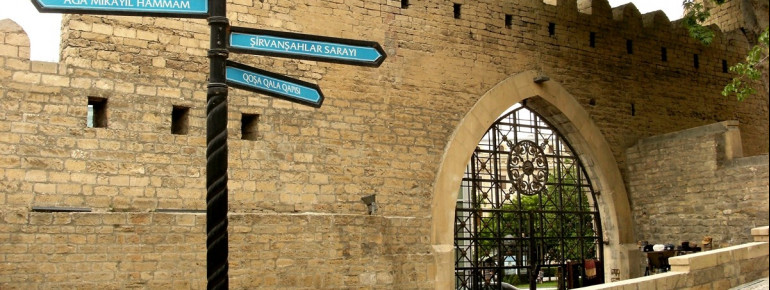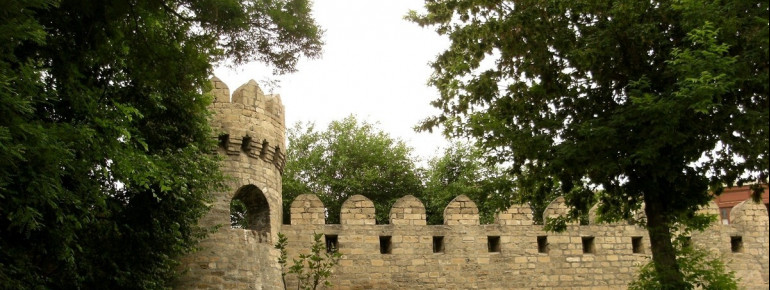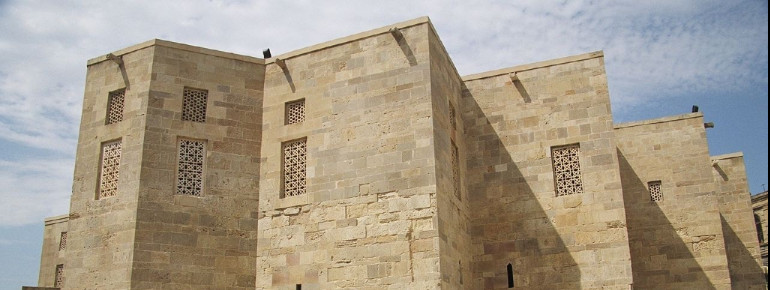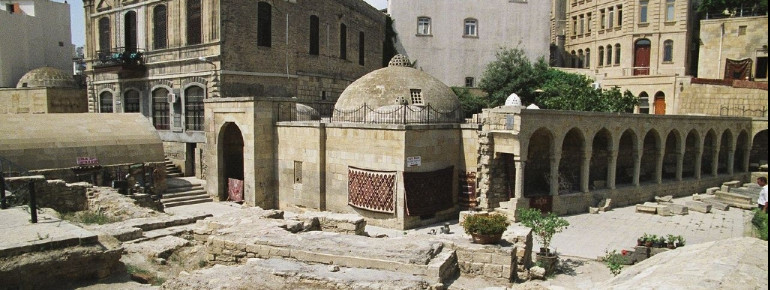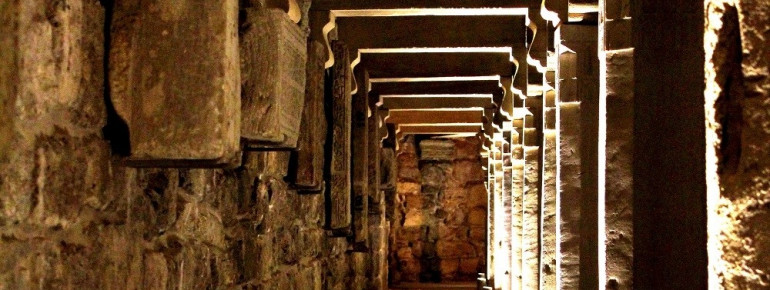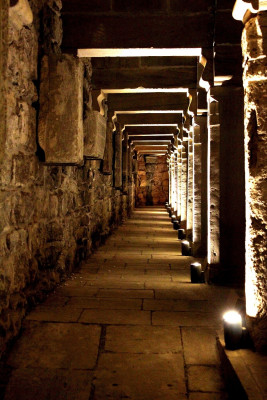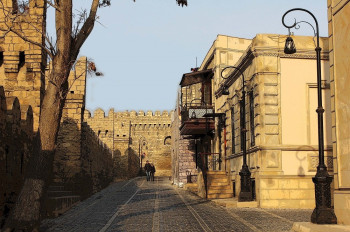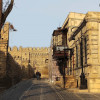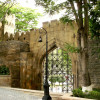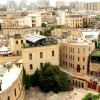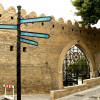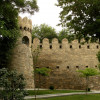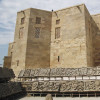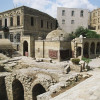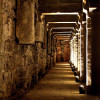Contents
Description
Icheri Sheher and its unique parts
The old city center of Baku is called Icheri Sheher in the Azerbaijani language, which is still used today as a fixed term for this region. Since this place is usually directly associated with the nation of Azerbaijan and its national pride, it is still of great importance to every citizen of the country today. Although the area covers only 22 hectares, it is home to over 100 historical monuments, some of which are UNESCO World Heritage Sites. In addition to the 1,300 residents who still call Icheri Sheher their home, there are also a number of museums, hotels, and vacation homes. Even today, the city is surrounded by an 8- to 10-meter-high and 3.5-meter-thick wall, like a fort, which makes Icheri Sheher a very authentic place of history even in the 21st century, so that many national tourists are still interested in this special place.
Indestructible buildings
As you stroll through the old streets of Icheri Sheher, you will soon notice the Maiden Tower, which is often regarded as a symbol of the old city. It is not only famous for its enormous and impressive size, but also offers a unique view of the Caspian Sea. The tower is seamlessly integrated into the outer wall of the city and got its name as the Maiden Tower because of its impregnability in the past. At its highest point, the tower reaches a height of 31 meters, making it an imposing sight even from a distance. Although many research teams have studied the area in and around the tower, there is still no consensus on when exactly the building was constructed. As a result, the Maiden's Tower remains shrouded in mystery and myth, making it an even more interesting sight to see.
Mausoleum with profound messages
Equally beautiful to look at and no less steeped in history is the palace complex, which was the last residence of the rulers of the Shirvan State. In the Middle Ages, this was the most powerful state in all of Azerbaijan. While different groups constantly fought for power in the south, the Shirvan people ruled the north of the country for several dynasties. The palace itself contains several small highlights, making the building as a whole the centerpiece of the entire complex. Here you will find the mausoleum of the ancient ruler Farrukh Yassar, who built this part as his personal burial place. On the stones you will find small inscriptions referring to life after death and the forgiveness of sins, telling even more mythical stories from the past.
Cultural heritage of the country
In addition to the impregnable Maiden Tower, the complex also includes the so-called Broken Tower, also known as the Mohammed Mosque. Minarets have always played an important role in Azerbaijani architecture, as is the case with this building. It was built in 1078 and therefore has a very outdated structure. This part of Icheri Sheher is now also a UNESCO World Heritage Site, further emphasizing the cultural significance of this place. So, when visiting Azerbaijan, you should definitely not miss the old city of Baku, because here you can experience the country's history up close and as authentically as possible.
Historical Information
Special status of the Old City
In its early days, Baku was one of the most densely populated cities in the Middle East, benefiting greatly from its favorable climate and natural and geographical conditions. Its convenient location on central trade routes also made it attractive and supported the city's economic boom. The perception of Baku as a “promised” land has always played an important role in the history of the place. Even before the Arabs conquered the area, elements of Christianity, idol worship, and fire worship were present here, resulting in a colorful mix of different faiths. According to tradition, many monuments and shrines from this period were destroyed by the Byzantine Emperor Iracly when he conquered the city.
Old structures with a lasting impact
But early Baku not only had its own unique beliefs, its multifaceted architecture also demonstrates the artistry and skill of the people who lived there at the time and remains a testament to their boundless ingenuity to this day. The inhabitants of the old city were not only highly skilled craftsmen, they also organized themselves very efficiently within their communities. There were internal groups called mahallas, which formed the economic center of the community, so to speak. Even back then, the citizens focused on the production of particularly valuable goods. Therefore, things like water supply, sanitation, and sewage systems always played an important role, as they ensured the sustainable coexistence of the society at that time. Thus, the population at that time was already highly developed and knew how to maintain its own civilization. Last but not least, they developed strategically and militarily superior defense mechanisms, so that they were rarely affected by external attacks. Some of these systems are still studied and used by the military today, so that this community and its structures continue to have an enormous influence on the present.
How to get there
By car
From Iran
If you are coming from the northern part of the country, take the R43 towards Salyan. From there, take the M3 to the M2, which will eventually take you to Baku.
From Russia
If you are coming from the Russian border, take the E119 along the coast towards Sumgayit, which will also take you to Baku.
By public transport
Although the rail network is not yet fully developed, you can still travel from the airport to Baku. Connections from Tbilisi, Tumen, Rostov, and Kharkov are also possible. You can also get around relatively easily by bus. It only takes 25-30 minutes to get from the airport to the center of Baku. Other bus companies also operate connections between the capital and Zagatala, Shaki, and Lahij, so you don't necessarily have to rely on a car.
By plane
The nearest airport is Baku Heydar Aliyev International Airport, from which you can easily reach the city center of Baku.

